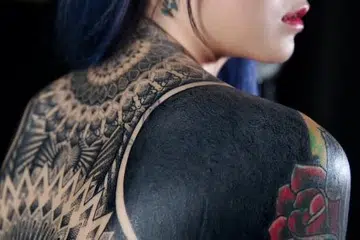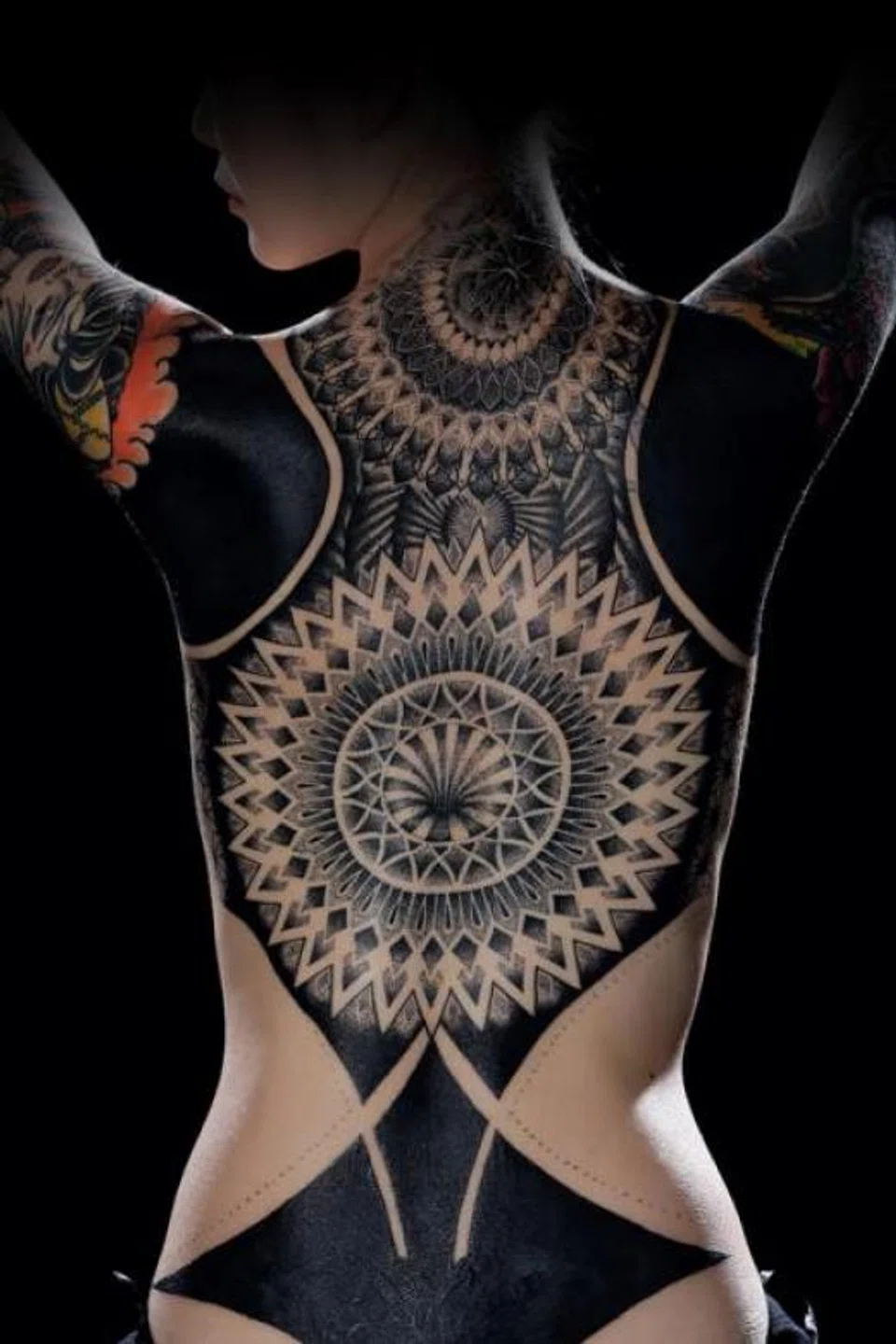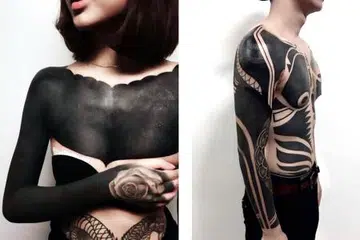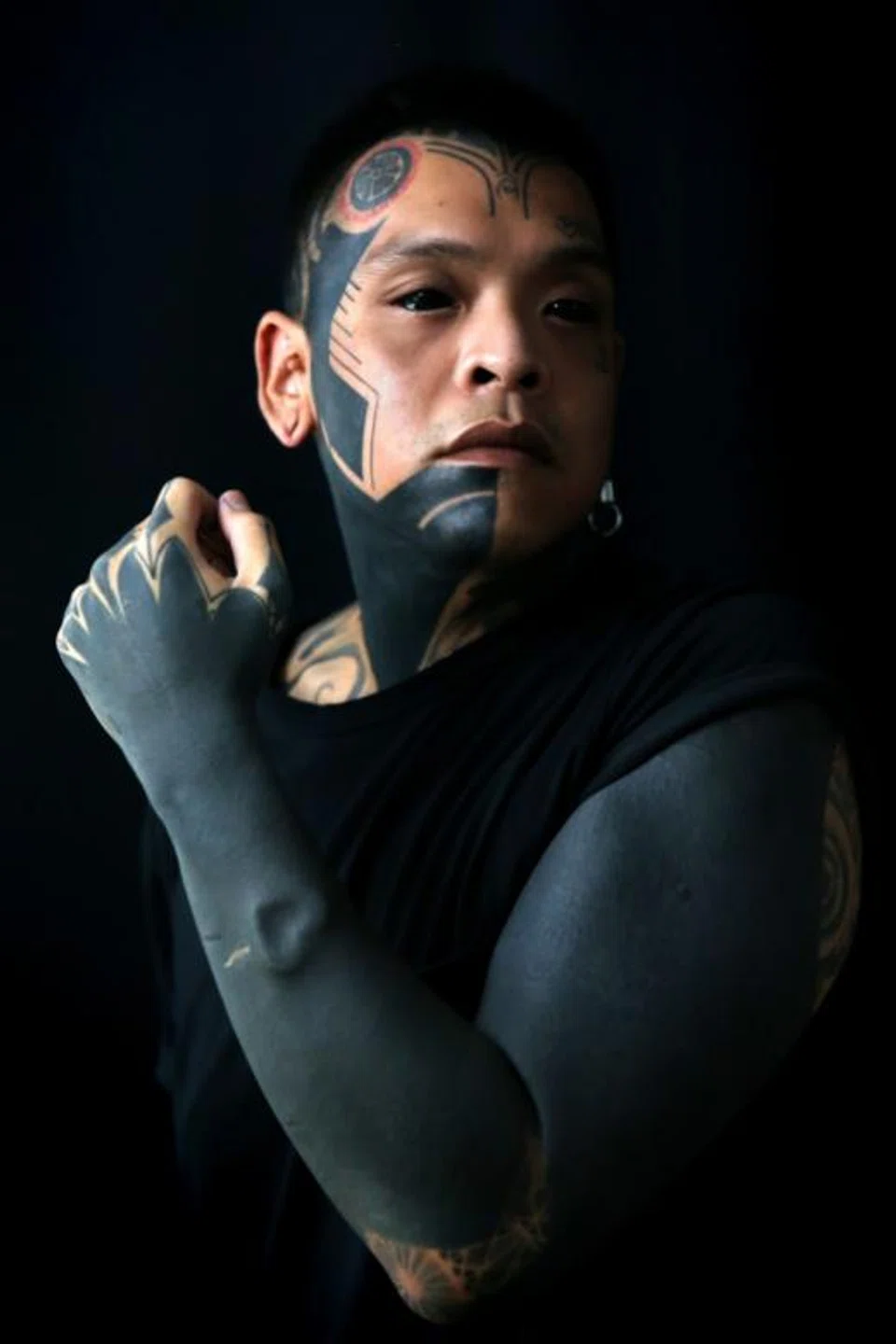Blackout tattoos: The inked and the Singaporean named as pioneer inker
People worldwide adopting trend, S'porean artist named as pioneer
Her back used to look like a "sticker book" with the hastily decided tattoos littered all over.
"It was bad. I had a fairy on my left shoulder and something that was tribal-like," says Miss Melody Chan, 29, a marketing manager.
But she has since found a solution.
Where the fairy used to sit now lies a patch of black. And it is the same for her right shoulder, with more artistic shapes of solid black trailing down her back.
They are known as blackout tattoos - a trend that is taking the online world by storm - and they involve covering parts of the body with solid areas, shapes and patterns of black ink.
Says Miss Chan: "They don't just cover up. The black areas complement my other tattoos, and they make my whole back piece special."
Blackout tattoos were first thrust into the spotlight after the works of local tattoo artist Chester Lee, also 29, started making rounds online two weeks ago. (See below)
Mr Lee, who works for Oracle Tattoo,did the blackout tattoos for Miss Chan. He catapulted to fame after he posted photos of his works on his Instagram account @oddtattooer.
International media outlets such as the New York Post, BuzzFeed and Distractify started featuring the blackout tattoos, with some even calling him a pioneer of the craft.
COVER UP
The most common reason people get blackout tattoos is to cover up old ones, says Mr Lee, who has been doing them for more than five years.
"Tattoos can sometimes be irrational decisions, and people end up regretting them. Blackout tattoos are a convenient way to cover them up."
But there are also those who simply like the uniqueness of the look.

According to Mr Lee, blacking out the skin highlights certain contours of the body and presents an opportunity to use the negative space as a form of expression.
In Miss Chan's case, the blackout tattoos can also be combined with traditional tribal patterns to produce more complex designs.
But the process is more time-consuming than regular tattooing.
Mr Lee says: "There is nothing different about the process - the same equipment and inks are used. But everything is applied on a larger scale. It is not like I can just paint over the skin with a brush."

The New Paper on Sunday understands that tattoo parlours and artists charge between $150 and $300 an hour. Customers end up paying more since it takes more time to work on a blackout tattoo, as compared to a normal tattoo.
Miss Chan expects to spend about $10,000 on the whole process.
Typically, a blackout tattoo that covers a person's arm from the wrist to the shoulder, known as a full sleeve, can take four sessions, with each session lasting five hours.
Getting inked for such a long time can be painful, so Mr Lee says he always explains the process thoroughly to his customers before starting work on them. He adds: "It is not like they can change their mind. They have to be prepared."
GLOBAL TREND
The blackout tattoo trend has picked up abroad.
American tattoo artist Nathan Mould, whose works have been featured alongside Mr Lee's, says customers have sought him out to get these "heavy black work tattoos".
Mr Mould says: "Some cover old tattoos, and some are just done for the pure love of large areas of black."
Another tattoo artist whose works were featured, Mr Bryce Graham from Rough Diamond Tattoo in England, says blackout tattoos are a "growing phenomenon".
"They have been gaining a lot of popularity here, and artists are doing a lot with them nowadays.
"There is definitely an increased following of fans," says Mr Graham.
Miss Chan can attest to that.
The picture of her back, uploaded by Mr Lee to his Instagram account, has amassed more than 7,500 likes since it was posted on March 28.
But it is not even complete, she says. Even after four sessions of eight hours each, Miss Chan says she still has two more sessions to go as she needs to fill in some portions of her tattoos. The process might be long, but she believes they are worth it.
"It has taken a while, but I am glad that with Chester's help and the blackout tattoos, I can get the back piece that I really want," she says.


What a Skin Expert Says
Getting a tattoo, be it blackout or otherwise, carries an amount of risk, says dermatologist Gavin Ong.
"There's always a risk of infection and bleeding," he explains.
Dr Ong, of skin clinic The Skin Specialist in Orchard Road, says: "It all depends on the skill of the tattoo artist as well as how clean the equipment used is."
Those keen on getting inked should always make sure the needles are sterilised.
Even then, allergic reactions, which Dr Ong says are dangerous, can still happen.
"Depending on the tattoo, some people may be allergic to the dyes or inks used. It can cause allergic contact dermatitis, ranging from just redness of the skin to an itchy scaly rash that can develop into blisters," he says.
When this happens, the trigger, which is the ink in the skin, cannot be removed easily and dermatologists must find ways to break down the inks using pigment lasers.
There is also the possibility of keloids, which Dr Ong refers to as "abnormal scarring of the skin".
He says: "In some patients, their skin gets too traumatised by the act of tattooing so it starts scarring. When these scars heal, they take up the shape of the tattoo.
"These scars are permanent, and even if people decide to remove the inks in their skin, the keloids will still remain."
In the case of blackout tattoos, the risks of infection, bleeding, allergies and keloids are even greater due to the larger surface area of the tattoos.
"Before getting a tattoo, one should assess the potential risks before making the decision that could stay with them for life," says Dr Ong.